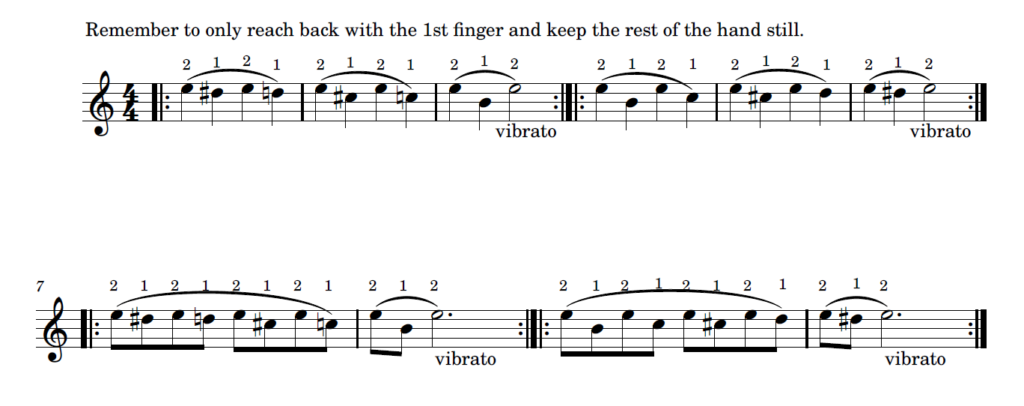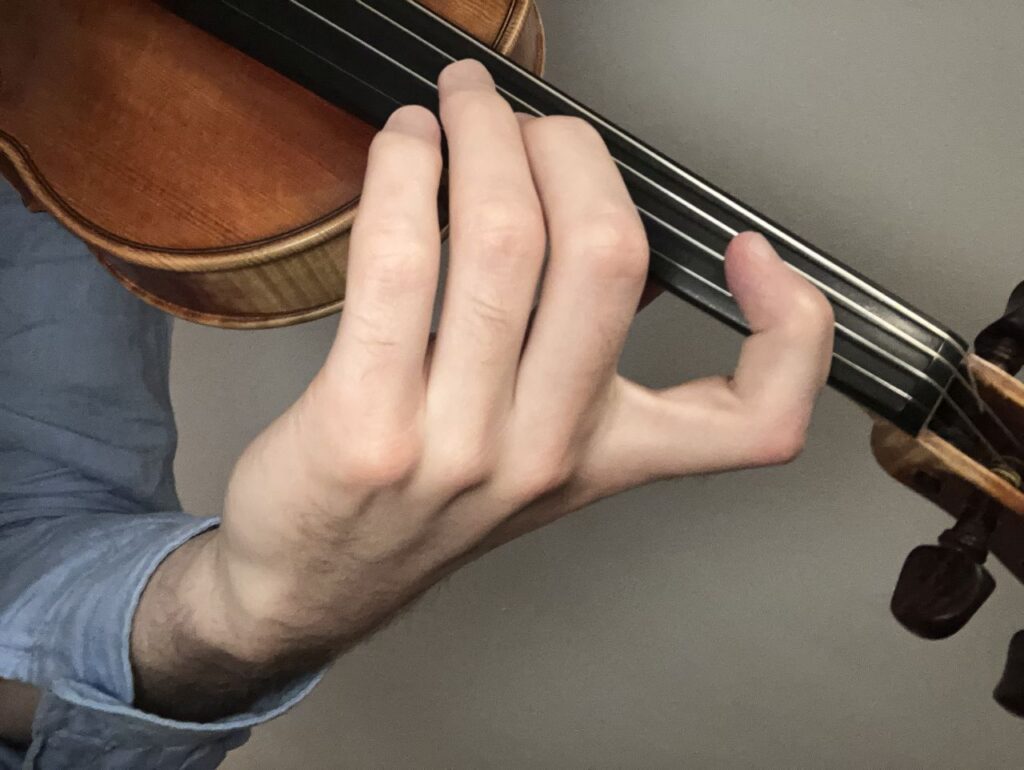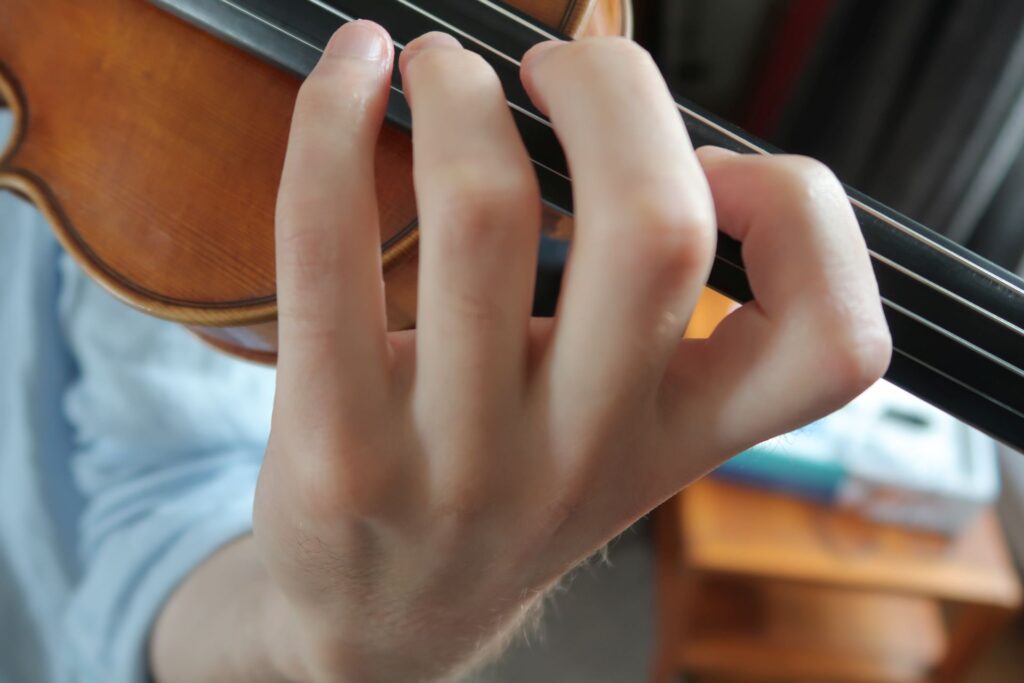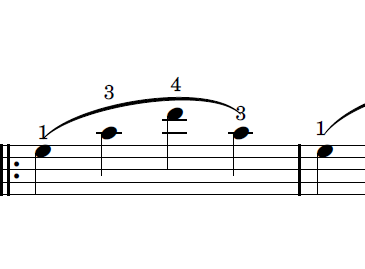We’ve previously discussed the concept of reaching back with the 1st finger, which greatly contributes to establishing a comfortable and dependable hand frame – a natural arm and hand position that aligns our fingers accurately on the fingerboard.
Drawing from the earlier lesson titled “Expanding the Hand Frame: Reaching Back with the 1st Finger,” you now grasp the significance of this concept. It ensures a comfortable placement of your little finger on the fingerboard. For most violinists, a subtle reach back with the 1st finger has a significantly positive impact on their overall hand positioning. Individual hand sizes vary of course, and if your hands are on the larger side, the need for reaching back to accommodate the little finger might be less obvious. Nonetheless, reaching back allows you to navigate the fingerboard more freely, which is of interest to all violinists. It enhances your access to notes, reducing the need for frequent shifts and extensive hand adjustments.
Let’s now take this exploration a step further. In our initial exercise, the objective was to reach back with the 1st finger and execute double stops up to a minor third using the 1st and 2nd fingers, without effecting the position and relaxation of the whole hand. Only the 1st finger moved back from its base joint. In the next exercise the goal is to comfortably play a perfect fourth interval between the 1st and 2nd fingers on 1 string and a double stop octave across 2 strings. This expansion builds upon our existing foundation, allowing us to master an even wider range of finger placements and transitions.
When doing the following exercises relaxation is key. Only practice them a few minutes at a time and never force a stretch. Make sure your wrist feels soft throughout the exercises. Select a new starting note each time you perform this exercise.

Begin practicing the next exercise at a slow pace initially. Ensure that you fully release your fingers before each shift, allowing them to rest gently on the string’s surface before transitioning to the subsequent notes.



